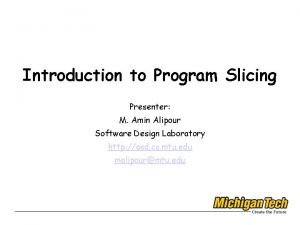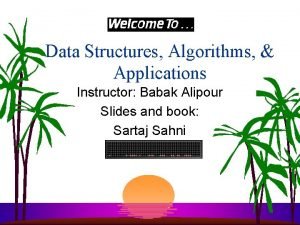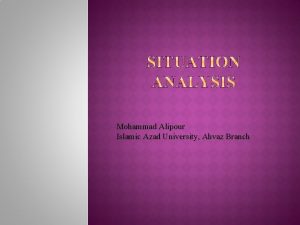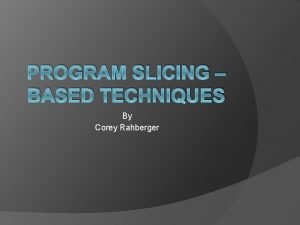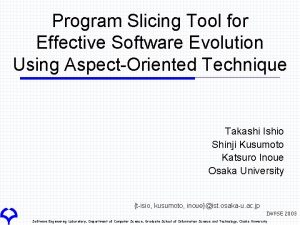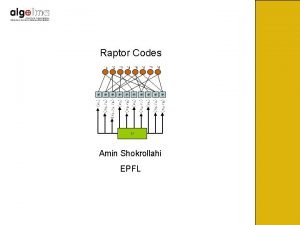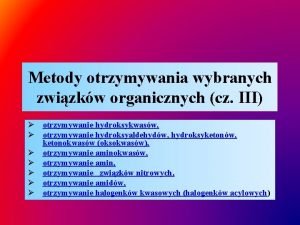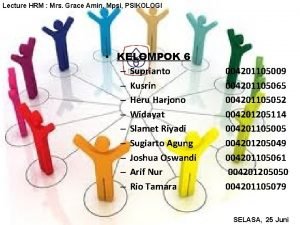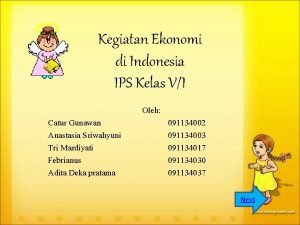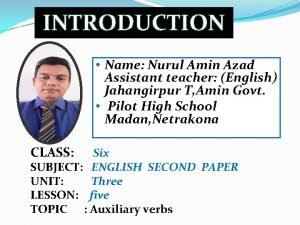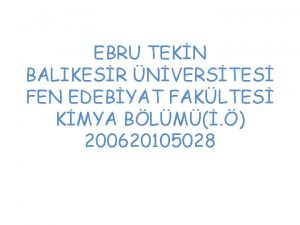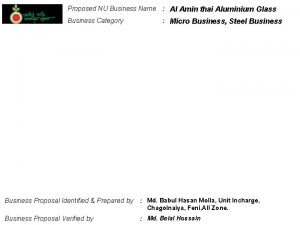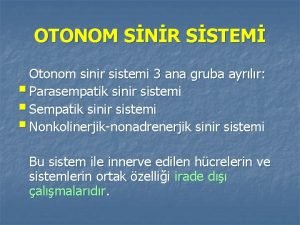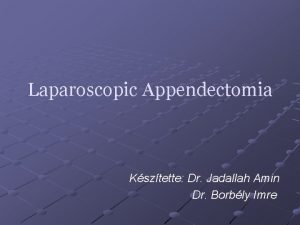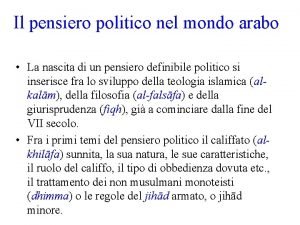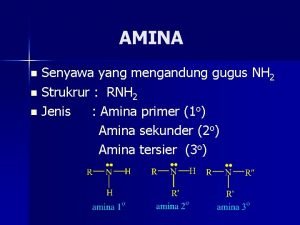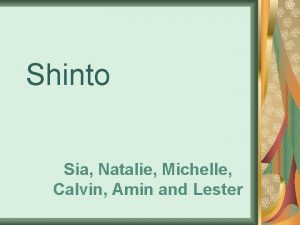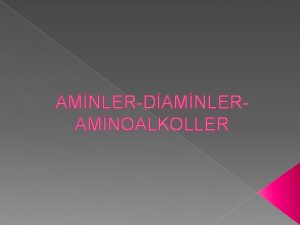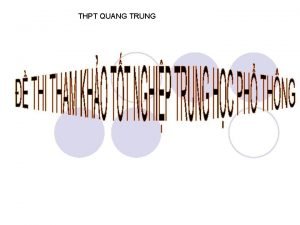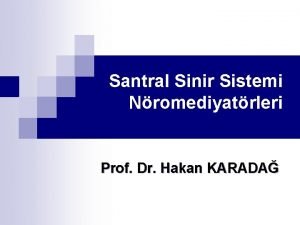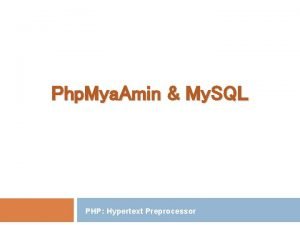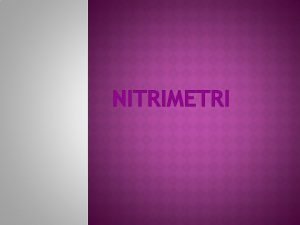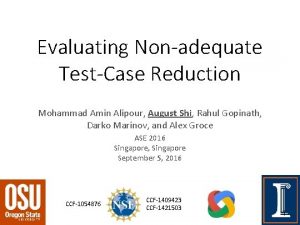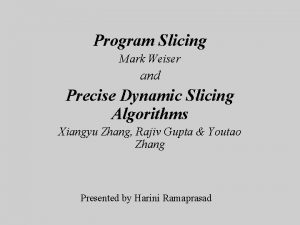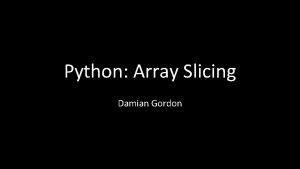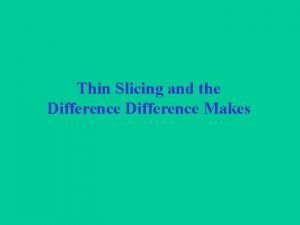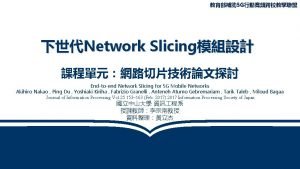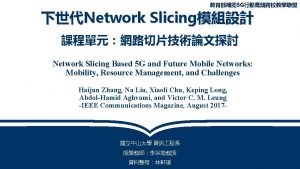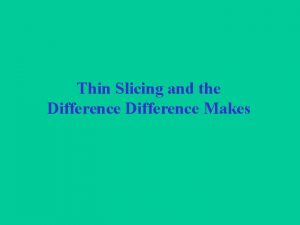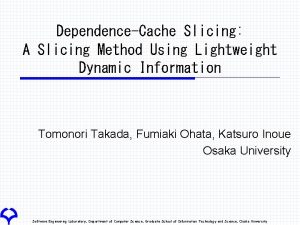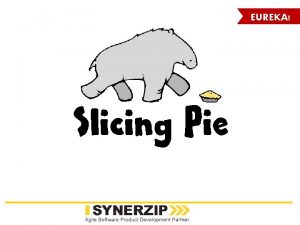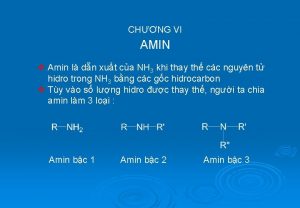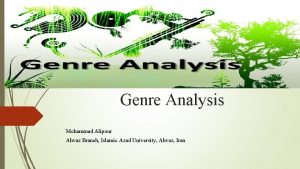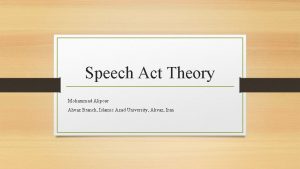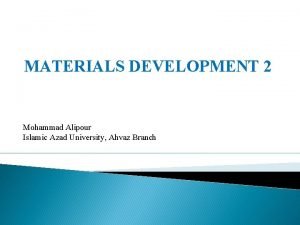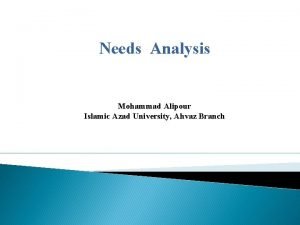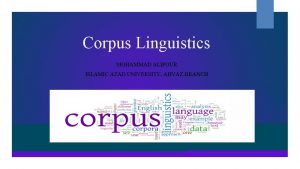Introduction to Program Slicing Presenter M Amin Alipour


























- Slides: 26

Introduction to Program Slicing Presenter: M. Amin Alipour Software Design Laboratory http: //asd. cs. mtu. edu malipour@mtu. edu

Outline • • • What is program slicing Classifications Basic Concepts Basic Algorithms Challenges Applications

History • Programs Slicing was introduced by Mark Weiser as his Ph. D thesis. • He argued that a programmer intuitively tries to slice a program to debug it.

Mark D. Weiser (July 23, 1952 – April 27, 1999) • He was a chief scientist at Xerox PARC. Weiser is widely considered to be the father of ubiquitous computing, a term he coined in 1988.

What is program slicing? • Informal: “which statements affect value v in statement s” • Formal: – ”For statement s and variable v, the slice of program P with respect to the slicing criterion <s, v> includes only those statements of P needed to capture the behavior of v at s. ”

Example Read(n) I=1 Sum = 0 Product = 1 While I<=n do sum = sum + I product = product + I I=I+1 Endwhile Write(sum) Write(product) Source Code Slice for “product” at last statement

Basic Concepts • Control flow graph – A graph which each node is associated with a statement and the edges represent the flow of control. – Each node n is associated with two sets REF(n) and DEF(n)

Example

Example Contd.

Basic Concepts-contd • Program Dependence Graph (PDG) – The vertices of the PDG corresponds to the statements and control predicates, – The edges corresponds to data and control dependencies. – It has several variants.

PDG Example

Classifications • Static Slicing vs. Dynamic Slicing vs. Amorphous • Executable vs. Closure • Forward vs. Backward vs. Chopping

Basic Algorithms • Data Flow Equations • Information flow relations • Dependence graph approaches

Data Flow Equations • Statement-minimal slices: – Slices which no other slices for the same criterion contains fewer statements. • Problem of finding minimal slices is undecidable. • Uses equations alliteratively until it stablizes.

Example of Equations

Example: Relevant Sets for <8, a>

• Information-flow relations are computed in a syntax-directed, bottomup manner. • For a statement (or sequence of statements) S, a variable v, and an expression (i. e. , a control predicate or the right-hand side of an assignment) e that occurs in S, the relations λ, ρ, and � μ are defined.

Information-Flow Relation

Information-Flow Relationcontd

PDG Example

Challenges • Unstructured programs – It changes the control flow of program. • Interprocedural Slicing – Side-effects on global data and Call by references • Arrays and Pointers – How can determine if a variable is defined or referenced by a pointer – Having A[f(i)] and A[f(j)], Can f(i)=f(j)?

Concurrency • Concurrency – It introduces three more dependencies: • interference dependence • parallel dependence • synchronization dependence. • Size – In almost all applications of program slicing, the smaller the slice the better.

Applications • Debuging – Finding set of statements that changes a variable of concern. • Software Maintenance – Slicing helps in understanding of existing software and making changes without having a negative impact. • Testing – Helps in regression test.

Applications- Cont’d • Differencing – To capture semantic differences between two programs • . . .

Some Slicing Tools • Wisconsin Program Slicer (Code. Surfer) – It can perform forwards and backwards slicing and chopping of C programs. • Unravel – It perform static backward slicing of C programs. • Kaveri – It performs static forward and backward slicing and chopping of Java programs.

References • David Binkley, Keith Brian Gallagher: Program Slicing. Advances in Computers 43: 1 -50 (1996) • K. Gallagher and D. Binkley. Program Slicing. Frontiers of Software Maintenance, 2008. Beijing, China, October 1 -4, 2008. • Tip, F. 1994 A Survey of Program Slicing Techniques. . Technical Report. UMI Order Number: CS-R 9438. , CWI (Centre for Mathematics and Computer Science).
 Amin alipour
Amin alipour Babak alipour
Babak alipour Mohammad alipour
Mohammad alipour Aaron rahberger
Aaron rahberger Program slicing tool
Program slicing tool Raptor
Raptor Hydroliza amidów
Hydroliza amidów Grace amin
Grace amin Iktua
Iktua Narul amin pilot
Narul amin pilot Rektant
Rektant Amin thai
Amin thai Bretilyum katekolamin
Bretilyum katekolamin Dr jadallah amin
Dr jadallah amin Qasim amin
Qasim amin Etil metil propil amina
Etil metil propil amina Project management processes
Project management processes Ghazala amin
Ghazala amin Md nurul amin
Md nurul amin U ime oca i sina i duha svetoga na latinskom
U ime oca i sina i duha svetoga na latinskom Michelle amin
Michelle amin Bagaimana pendapat ulama tentang kehujjahan mazhab shahabi
Bagaimana pendapat ulama tentang kehujjahan mazhab shahabi Kuaterner amin türevleri
Kuaterner amin türevleri đốt amin
đốt amin Amin yapılı nöromediyatörler
Amin yapılı nöromediyatörler Php my amin
Php my amin Prinsip kerja nitrimetri
Prinsip kerja nitrimetri
